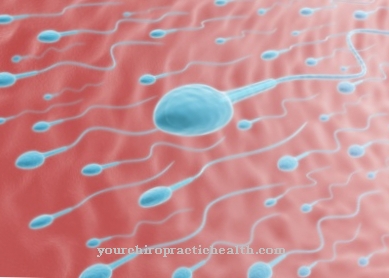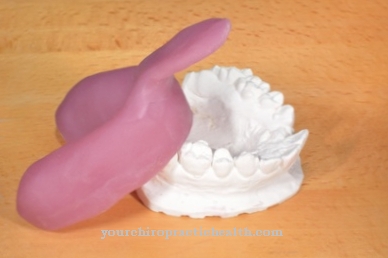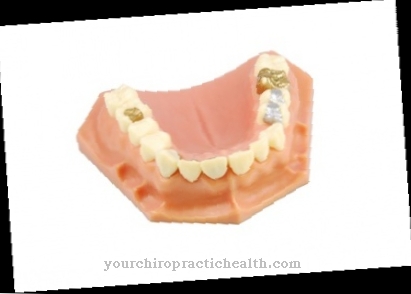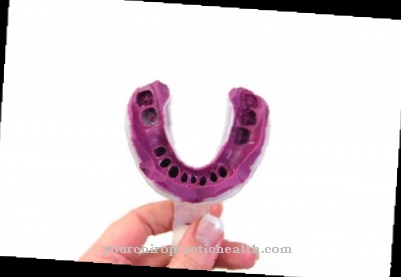Peripheral venous catheters are special cannulas that can remain in the patient's vein for a long time. They are used for multiple or long-term administration of intravenous drugs or short infusions and are mostly used in hospitals or in emergency medicine. Peripheral venous catheters are available in sizes that are easy to distinguish in terms of color and can be selected depending on the nature of the vessels and the indication.
What is a peripheral venous catheter?

Peripheral venous catheters are also called IV cannulas and are to be distinguished from the central venous catheters. They are small catheters that, as the name suggests, can be inserted into the peripheral veins of the body.
This special form of catheter is used very frequently in practice. Peripheral venous catheters are often used not only in emergency situations. Peripheral venous catheters are primarily used for fluid therapy. A patient can be given multiple intravenous medications or infusions via peripheral venous catheters, and blood transfusions are also possible.
Suitable parts of the body for placing a peripheral venous catheter are the vein on the back of the hand, the vein on the forearm or the vein in the crook of the elbow. Each of these positions has its own advantages and disadvantages. What these parts of the body have in common, however, is that the veins run superficially and are therefore easily accessible.
The peripheral venous catheter was invented in 1950 by David J. Massa. It was established in Germany in 1962 by the doctor and chemist Bernhard Braun. It was through him that the colloquial term was created Braunüle for the peripheral venous catheter.
Shapes, types & types
Peripheral venous catheters come in different sizes that can be easily distinguished by their colors. The smallest peripheral venous catheters have a yellow plastic element, followed by the colors blue, pink, green or green-white, white, gray and orange in increasing size.
The unit of size for peripheral venous catheters is the gauge (G). The larger the gauge, the smaller the diameter of the venous catheter and the smaller the gauge, the larger the diameter of the catheter. We also speak of the flow rate of the catheter: the smaller the gauge value, the higher the flow rate of the catheter, and vice versa, the same principle applies here.
For children, a yellow, blue or pink peripheral venous catheter with a high gauge of 24 to 20 is used, which corresponds to an outside diameter of 0.7 to 1.1 mm and an inside diameter of 0.4 to 0.8 mm. For adults, the size is selected depending on the nature of the vessels and the respective indication.
For infusions, catheters with a gauge of 18 to 17 are common, which corresponds to an outer diameter of 1.3 to 1.5 mm and an inner diameter of 1.0 to 1.1 mm. In the event of a shock or a similar emergency situation in which a lot of volume has to be quickly passed through the peripheral venous catheter into the veins, catheters with a larger diameter are usually used, which is a size of 16 to 14 G with an outer diameter of 1, 7 to 2.2mm and an inner diameter of 1.3 to 1.7. Not only the diameter but also the length of the plastic catheter increases with the decreasing gauge value.
Structure & functionality
The peripheral venous catheter essentially consists of two parts: a cannula made of steel and a catheter surrounding it made of plastic, more precisely made of Teflon. The part of the peripheral venous catheter that remains in the vein is made of tissue-friendly plastic. The venous catheter can be connected to infusions on the plastic element that is located outside the puncture site or, when not in use, closed airtight.
The use of a safety catheter has been mandatory for some time. When pulling out the cannula, a small, clamp-like metal construction is slipped over the needle, which significantly reduces the risk of infection from needle stick injuries for the doctors and the nursing staff.
Medical & health benefits
The peripheral venous catheter has several health benefits. It is mostly used to administer intravenous drugs or infusions. Blood can also be taken via a peripheral venous catheter, and blood transfusions are also possible with sufficiently large peripheral venous catheters.
Peripheral venous catheters may only be inserted by doctors or, if instructed by them, also by specialist staff such as nurses. Emergency paramedics are entitled to do so in such situations even without a doctor's approval.
The size of the peripheral venous catheter is primarily selected according to the indication, as is the puncture site. In emergency situations in particular, a large volume must often be able to pass through the catheter in a short time. The great advantage of the peripheral venous catheter is that the patient only has to be loaded with a puncture once and the catheter can then remain in the vein for several days. This means that intravenous medication does not always have to be administered via a new puncture site. A closable chamber on the outer part of the peripheral venous catheter prevents blood from clotting in it.
A venous port or a central venous catheter is usually used for longer stays. A peripheral venous catheter should not remain in the vein for more than 72 to 96 hours. If it is still needed afterwards, it can be changed without any problems.
























.jpg)



